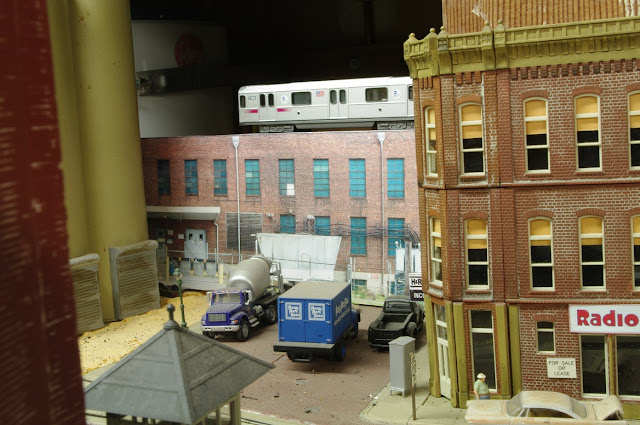But periodically, my interest in subjects like subway models rekindles, and yesterday I pulled this model out again to take a closer look. There's no shortage of subway fanatics on the web, and via Wikipedia and other searches, I found quite a bit about the prototype. It turns out this is a model of an R142A car, built by Kawasaki between 1999 and 2002. It is used on the A Division, which is the former IRT system that uses numbered routes.
Here's an NYMTA data sheet on this class:
So with the dimensions now available, I measured the model at 6-3/8 inches long. Dividing that into the approximate prototype length of 51 feet, which translates to 612 inches, I get an even 96, which means the model is actually 1:96, or 1/8" to the foot, and not the advertised 1:100. This brings it a little closer to HO -- in fact, back in high school and junior high, when I was building models out of shirt cardboard, this is what I used for HO scale, since I didn't have a scale rule at the time.So I started to think again, there must be something I can do with this, and maybe a few more like it. When I first got it, I thought about doing a dummy El structure with models like these on it, but I never quite figured out where to put it. But now I've started to think about the West Egg street background, and I put the model on top of a low-relief building flat to see how things fit:
Well, especially if I can rough out some sort of El structure, this might actually work! And I remember a guy posting many years ago on a forum that transit models, no matter how interesting they may be, basically just go back and forth. So I wouldn't be losing a whole lot if I simply used these as static models.Here are some more photos of the model.
Here's a prototype shot off the web: The possibilities would include lighting the interior with JustPlug LEDs and improvements to the model paint and detail. In particular, detail of the model below floor level is very crude, but it ought to be possible to add some additional boxes and so forth from styrene, since the chassis is plastic under the die cast body. The prototype window frames are silver, not black, and not all cars have the American flags and red fade stripes. I think HO NYMTA subway decals from Island Model Works could be used with any cars I repaint.The wheels are roughly HO gauge. I think with some trimming and fitting, I can replace the model wheels with HO plastic freight car wheels and get the car to fit on HO track on the dummy El structure.
These are available in the $15-20 range including postage off the web. I'm thinking about how I can incorporate some already completed building flats into a dummy El structure for the West Egg street background.








As a former IRT rider and subway fan I think including some type of elevated line to your layout is an excellent idea if you can find the space. Even if it's just a short track with the ends hidden behind a pair of buildings the single car coming out from behind one of the buildings will give the scene a nice urban look. Who's to say that the single car shown is not on the head end of a six to eight car express.
ReplyDeleteWhile you ponder this project I think the subway car would make a fine flatcar load. I've seen subway cars like this at the NY&A in Fresh Pond being delivered on flat cars. Here's a photo from the internet:
http://s3.amazonaws.com/rrpa_photos/83283/img775_edited-1.jpg